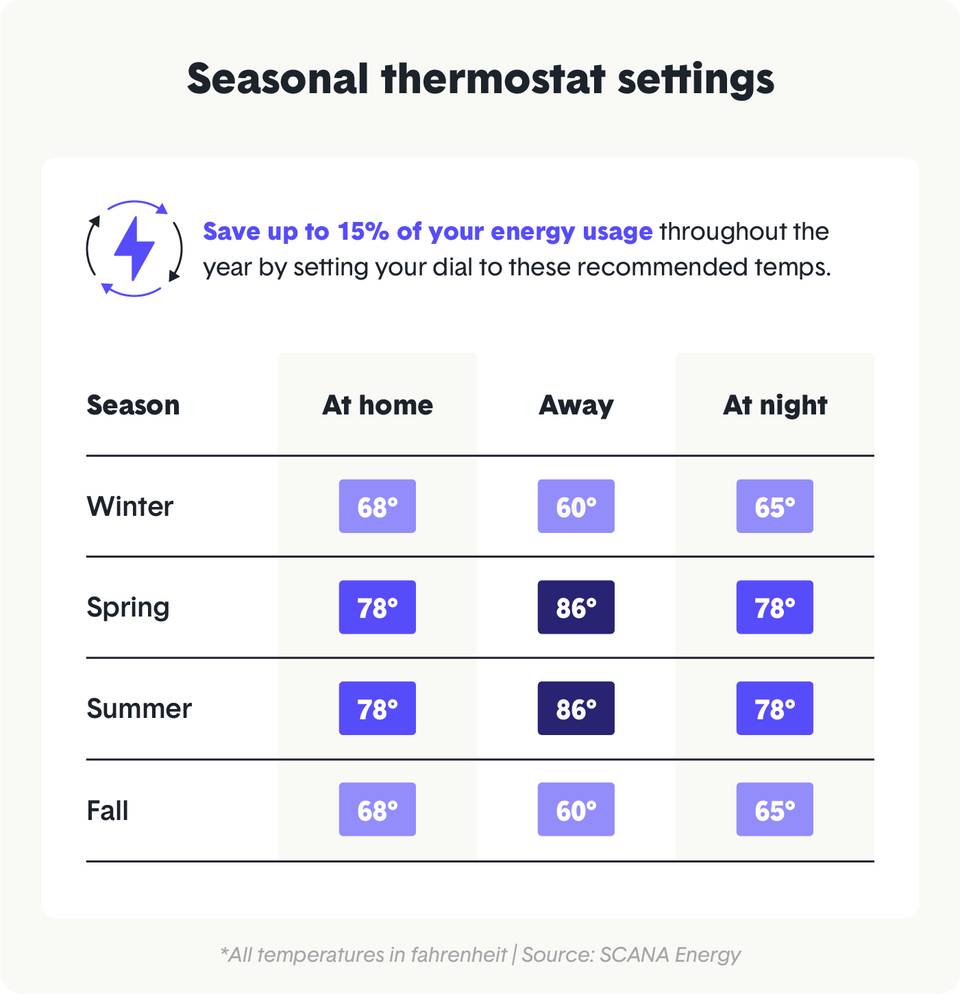Majority of Americans Don’t Consider Climate Change When They Set Their Thermostats

Did you know that your home heating and cooling habits are probably making climate change worse? Home heating is the single largest source of power consumption in the home, and air-conditioning is the third.
Ironically, as climate change progresses further, our home heating and cooling needs will continue to increase in order to insulate us from extreme weather. As harmful heat waves have spread across the globe in recent years, more and more countries are beginning to invest in home temperature systems –– making the environmental impacts of our home heating and cooling systems even greater.
As the earliest adopters of air-conditioning, Americans have paved the trends in home air-conditioning usage since the early 1900s. We ran a survey to get a better idea of how Americans think about their home thermostats in relation to energy usage. Our findings revealed:
- 57% of Americans don’t consider environmental impacts when they set their thermostat.
- 73% of Americans don’t program or adjust their thermostat before they leave the house.
Read on to discover more about the impacts of home heating and cooling systems, and how you can reduce energy waste in your own home.
When setting their thermostats, most Americans don’t think about the environmental impacts
Air conditioners are a staple of American households. The technology was invented in Buffalo, New York in 1902. Today, 90% of American households have air-conditioning. America is addicted to home heating and cooling, consuming more energy for air-conditioning than the rest of the world combined.
The prevalence of air conditioners in American life may have made us oblivious or unconcerned with air conditioning’s potentially devastating impact. When we surveyed Americans to see if they considered the environment when they set their thermostats, 57% admitted they don’t.
Women were 10% more likely than men to consider the impact of setting the thermostat. Women are also more sensitive to temperature changes overall, and more productive at warmer temperatures, according to this study.

What are the environmental risks of home air-conditioning units?
While we transition away from plastic bags in supermarkets and toward more sustainable waste removal practices such as recycling and composting, our survey revealed Americans still aren’t thinking of their home temperature dials as a way to cut down our carbon footprint — despite heat and air contributing to nearly half of a home’s energy usage.
According to Energy Star, approximately 45% of a home’s energy is utilized for heating and cooling. Further, air conditioning in the U.S. accounts for 5% of total energy consumption annually, and releases approximately 100 million tons of carbon dioxide into the air.
Air conditioners also make surrounding neighborhoods warmer by venting hot air outside. Some studies have observed air-conditioning raising overnight temperatures by about two degrees Fahrenheit (one degree Celsius).
In addition to energy waste and temperature increases, air conditioners also contain another harmful greenhouse gas called hydrofluorocarbons (HFCs) which can leak out of units during usage, maintenance, and disposal. HFCs are so dangerous to the environment that world leaders are taking steps to phase them out of production — but it will take years to make this a reality.

Only 27% of Americans program or adjust their temperature settings when they leave the house
While an America without air-conditioning seems unfathomable, one of the easiest ways to reduce energy waste is to adjust your thermostat when you’re not using it — yet most Americans aren’t practicing this simple habit.
When we asked Americans whether they program or adjust their home thermostats before they leave the house, an overwhelming majority (73%) said they do not. These results were especially shocking given the popularity of programmable thermostats and smart thermostats in recent years.
According to Energy.gov, you can save as much as 10% a year on your heating and cooling by turning your thermostat 7 to 10 degrees from its normal setting. In the winter, turning your thermostat down when you are sleeping uses 1% less energy for every degree you take off of the dial.
See more home winterization tips to save energy.
Do programmable thermostats save energy?
The answer is complicated. Programmable thermostats are designed to save energy by letting you manually set the thermostat lower when you’re away during winter months and raise temperatures during summer. But these devices only work correctly when the user is vigilant about saving energy all of the time. That means keeping your thermostat at the recommended temperatures when you’re home and away.
Determined to save energy to cut costs on your electric bill and help the environment? Check out our chart of recommended temperatures.

Air conditioners may be synonymous with modern American life, but you can still take steps to reduce your energy usage and offset the impacts of climate change if you have one in your home.
In addition to helping the planet, conserving energy also saves you money on your utility bills. If you’re looking to cut costs in other areas of home ownership, discover ways to save by comparing your home insurance options.
Sources:
Norbord | Grist | New York Times | Energy.gov | SCANA Energy
Methodology:
This study was conducted for The Zebra using Google Surveys. The sample consisted of no less than 1,000 completed responses per question. Post-stratification weighting has been applied to ensure an accurate and reliable representation of the total population. This survey was conducted in January 2020.
Stay in touch and subscribe!
Get advice, insights and tips from our newsletter.
